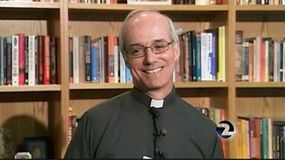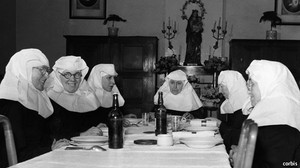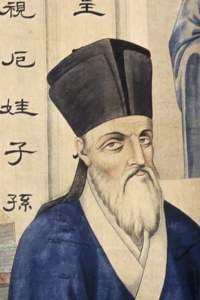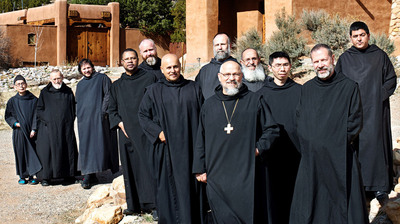
Pentecost is a difficult feast for some people. The Holy Spirit is sometimes called forgotten member of the Godhead. It takes a lot of time to understand what it means to live by the Spirit, to be sustained by the Spirit, to be set in motion by the Spirit for the good of all. There is a creative tension with the Holy Spirit: a genuine freedom for something and being in harmony, in unity with all others, even when it rubs me the wrong way. Here, let’s agree that freedom means something along the lines as adhering to what God wants for us, that is, seeking out our destiny. It certainly doesn’t mean licentiousness. As the Pope points out in the paragraph I cited below, the Holy Spirit is awakens in me the reality of unity and not uniformity. And there is the rub for many: how do I live with unity and not get consumed by an ideology of uniformity? Many can’t fathom living with a diversity of belief and practice of the faith. Here I am thinking how the gospel has been inculturated in the East and the West. For example, the rule of law in Eastern Christianity is different on many levels than it is in the Western form of Christianity. When we live parallel lives to that of the Church, or a life that dismisses the diversity of gifts, we can say with confidence that we are not living with the Spirit’s guidance.
…the Holy Spirit would appear to create disorder in the Church, since he brings the diversity of charisms and gifts; yet all this, by his working, is a great source of wealth, for the Holy Spirit is the Spirit of unity, which does not mean uniformity, but which leads everything back to harmony. In the Church, it is the Holy Spirit who creates harmony. One of Fathers of the Church has an expression which I love: the Holy Spirit himself is harmony – “Ipse harmonia est”. Only the Spirit can awaken diversity, plurality and multiplicity, while at the same time building unity. Here too, when we are the ones who try to create diversity and close ourselves up in what makes us different and other, we bring division. When we are the ones who want to build unity in accordance with our human plans, we end up creating uniformity, standardization. But if instead we let ourselve be guided by the Spirit, richness, variety and diversity never become a source of conflict, because he impels us to experience variety within the communion of the Church. Journeying together in the Church, under the guidance of her pastors who possess a special charism and ministry, is a sign of the working of the Holy Spirit. Having a sense of the Church is something fundamental for every Christian, every community and every movement. It is the Church which brings Christ to me, and me to Christ; parallel journeys are dangerous! When we venture beyond (proagon) the Church’s teaching and community, and do not remain in them, we are not one with the God of Jesus Christ (cf. 2 Jn 9). So let us ask ourselves: Am I open to the harmony of the Holy Spirit, overcoming every form of exclusivity? Do I let myself be guided by him, living in the Church and with the Church?
Pope Francis
Homily for Pentecost, excerpt
19 May 2013









